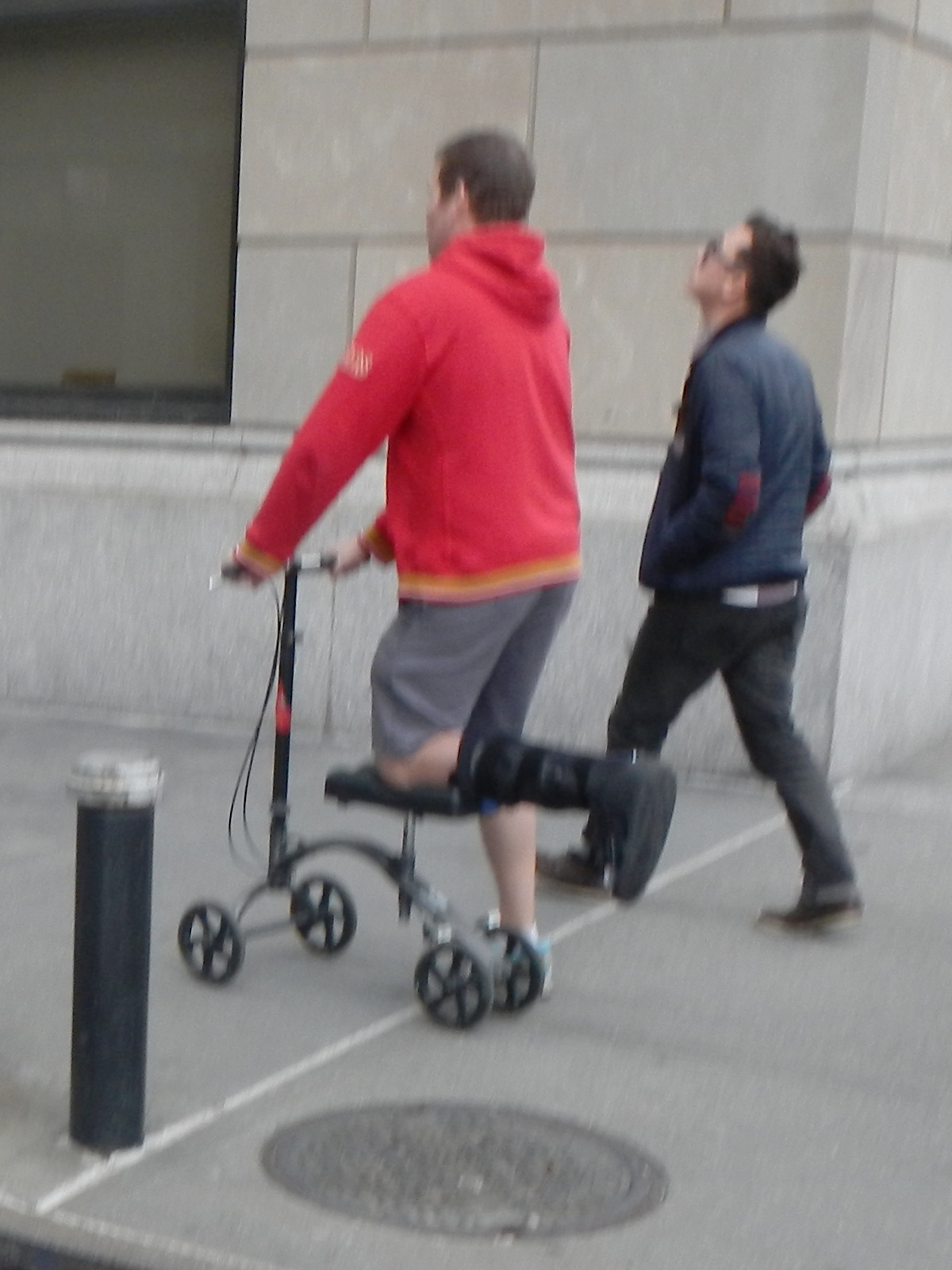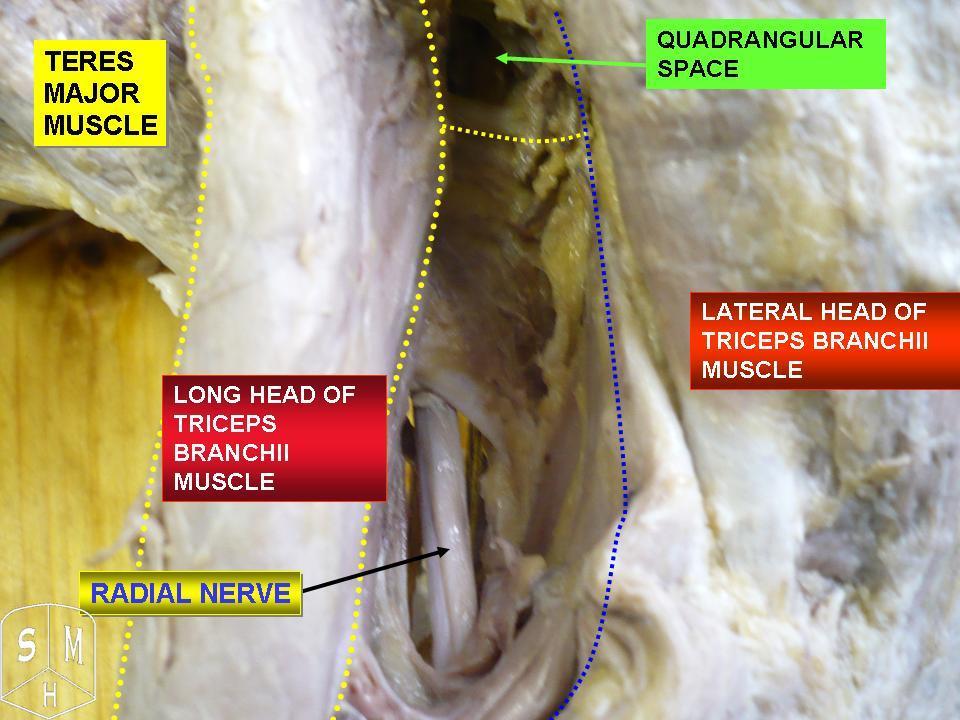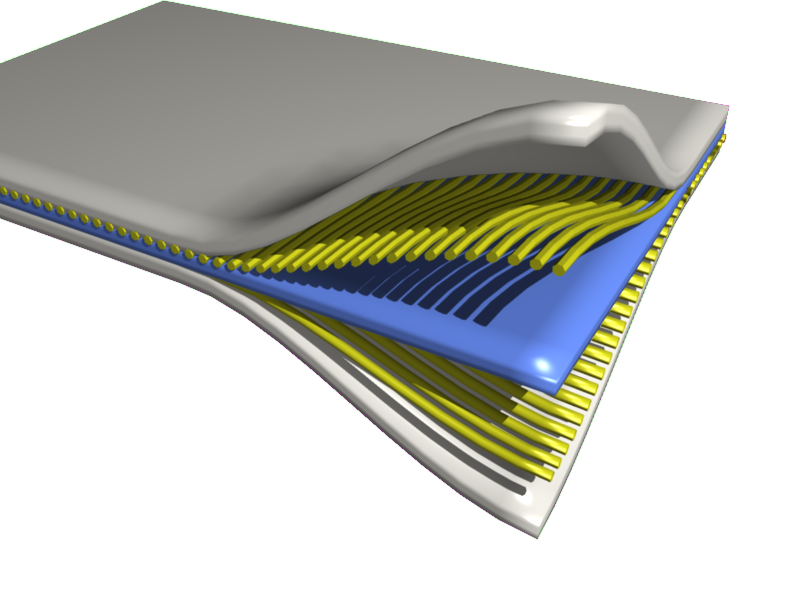|
Crutch
A crutch is a mobility aid that transfers weight from the human leg, legs to the upper body. It is often used by people who cannot use their legs to support their weight, for reasons ranging from short-term injuries to lifelong disabilities. History Crutches were used in ancient Egypt. In 1917, Emile Schlick patented the first commercially produced crutch; the design consisted of a walking stick with an upper arm support. Later, A.R. Lofstrand Jr. developed the first crutches with a height-adjustable feature. Over time, the design of crutches has not changed much, and the classic design continues to be the most commonly used. Types There are several types of crutches: Underarm or axillary Axillary crutches are used by placing the pad against the ribcage beneath the armpit and holding the grip, which is below and parallel to the pad. They are usually used to provide support for patients who have temporary restriction on ambulation.Taylor, C. R., Lillis, C., LeMone, P., Lynn, P ... [...More Info...] [...Related Items...] OR: [Wikipedia] [Google] [Baidu] |
Mobility Aid
A mobility aid is a device designed to assist individuals with impaired movement. These devices help people walk, maintain balance, or get around more easily. Mobility aids include walking supports like canes, crutches, and walkers for those with limited walking ability, as well as wheelchairs and scooters for individuals who cannot walk or need assistance over longer distances. For people who are blind or visually impaired, tools such as white canes and guide dogs offer essential support. There are also aids designed for use within buildings, such as stair lifts and transfer devices that help users move between floors or from one position to another. The term “mobility aid” generally refers to mechanical or assistive devices and is often used in official contexts, including tax or medical equipment classifications. These devices are typically intended to offer mobility similar to what a person might achieve when walking or standing without help. Emerging technologies cont ... [...More Info...] [...Related Items...] OR: [Wikipedia] [Google] [Baidu] |
Crutch Paralysis
Crutch paralysis is a form of paralysis which can occur when either the radial nerve or part of the brachial plexus, containing various nerves that innervate sense and motor function to the arm and hand, is under constant pressure, such as by the use of a crutch. This can lead to paralysis of the muscles innervated by the compressed nerve. Generally, crutches that are not adjusted to the correct height can cause the radial nerve to be constantly pushed against the humerus. This can cause any muscle that is innervated by the radial nerve to become partially or fully paralyzed. An example of this is wrist drop, in which the fingers, hand, or wrist is chronically in a flexed position because the radial nerve cannot innervate the extensor muscles due to paralysis. This condition, like other injuries from compressed nerves, normally improves quickly through therapy.Anatomy Physiology - The Unity of Form and Function by Saladin 6th Edition See also * Brachial plexus injury A brachial ... [...More Info...] [...Related Items...] OR: [Wikipedia] [Google] [Baidu] |
Knee Scooter
A knee scooter or knee walker is a two-, three- or four-wheeled alternative to crutches or a traditional walker as an ambulation aid. It is known by many other names, including knee coaster, knee cruiser, knee caddy, orthopaedic scooter, or leg walker. Over the years, it has taken on many forms—from small-wheeled devices suitable for indoor use, to larger, sturdier units capable of use outside on grass or paved surfaces. Today’s version is usually a lightweight, foldable design that, with the knee flexed, supports the shin of the unusable limb. The opposite foot makes contact with the floor or ground, providing propulsion. Operation The objective of the scooter is to create a safe, comfortable, and easy-to-maneuver alternative to the traditional crutch. Prior to its introduction, those experiencing foot surgery, bunionectomies, gout, below-the-knee amputations, diabetic ulcers and wounds, as well as foot sprains or fractures, had no choice but to limit activity during reh ... [...More Info...] [...Related Items...] OR: [Wikipedia] [Google] [Baidu] |
Cerebral Palsy
Cerebral palsy (CP) is a group of movement disorders that appear in early childhood. Signs and symptoms vary among people and over time, but include poor coordination, spasticity, stiff muscles, Paresis, weak muscles, and tremors. There may be problems with sense, sensation, visual perception, vision, hearing, and speech. Often, babies with cerebral palsy do not roll over, sit, crawl or walk as early as other children. Other symptoms may include seizures and problems with cognition, thinking or reasoning. While symptoms may get more noticeable over the first years of life, underlying problems do not worsen over time. Cerebral palsy is caused by abnormal development or damage to the parts of the brain that control movement, balance, and posture. Most often, the problems occur during pregnancy, but may occur during childbirth or shortly afterwards. Often, the cause is unknown. Risk factors include preterm birth, being a twin, certain infections or exposure to methylmercury duri ... [...More Info...] [...Related Items...] OR: [Wikipedia] [Google] [Baidu] |
Wheelchair
A wheelchair is a mobilized form of chair using two or more wheels, a footrest, and an armrest usually cushioned. It is used when walking is difficult or impossible to do due to illnesses, injury, disabilities, or age-related health conditions. Wheelchairs provide mobility, postural support, and freedom to those who cannot walk or have difficulty walking, enabling them to move around, participate in everyday activities, and live life on their own terms. Wheelchairs come in a wide variety of formats to meet the specific needs of their users. They may include specialized seating adaptions, and individualized controls, and may be specific to particular activities, as with sports wheelchairs and beach wheelchairs. The most widely recognized distinction is between motorized wheelchairs, where propulsion is provided by batteries and electric motors, and manual wheelchairs, where the propulsive force is provided either by the wheelchair user or occupant pushing the wheelchair by ... [...More Info...] [...Related Items...] OR: [Wikipedia] [Google] [Baidu] |
Walking Stick
A walking stick (also known as a walking cane, cane, walking staff, or staff) is a device used primarily to aid walking, provide postural stability or support, or assist in maintaining a good posture. Some designs also serve as a fashion accessory, or are used for self-defense. Walking sticks come in many shapes and sizes and some have become collector's items. People with disabilities may use some kinds of walking sticks as a crutch, but a walking cane is not designed for full weight support but used to help with balance. The walking stick has also historically been known to be used as a self-defense weapon, and may conceal a sword or knife. Hikers use walking sticks, also known as trekking poles, pilgrim's staffs, hiking poles, or hiking sticks, for a wide variety of purposes: as a support when going uphill or as a brake when going downhill; as a balance point when crossing streams, swamps, or other rough terrain; to feel for obstacles in the path; to test mud and wate ... [...More Info...] [...Related Items...] OR: [Wikipedia] [Google] [Baidu] |
Radial Nerve
The radial nerve is a nerve in the human body that supplies the posterior portion of the upper limb. It innervates the medial and lateral heads of the triceps brachii muscle of the arm, as well as all 12 muscles in the Posterior compartment of the forearm, posterior osteofascial compartment of the forearm and the associated joints and overlying skin. It originates from the brachial plexus, carrying fibers from the posterior roots of spinal nerves C5, C6, C7, C8 and T1. The radial nerve and its branches provide Motor neuron, motor innervation to the dorsal arm muscles (the triceps brachii and the anconeus) and the extrinsic extensors of the wrists and hands; it also provides cutaneous Nerve supply to the skin, sensory innervation to most of the back of the hand, except for the back of the little finger and adjacent half of the ring finger (which are innervated by the ulnar nerve). The radial nerve divides into a deep branch, which becomes the posterior interosseous nerve, and a su ... [...More Info...] [...Related Items...] OR: [Wikipedia] [Google] [Baidu] |
Titanium Alloy
Titanium alloys are alloys that contain a mixture of titanium and other chemical elements. Such alloys have very high tensile strength and toughness (even at extreme temperatures). They are light in weight, have extraordinary corrosion resistance and the ability to withstand extreme temperatures. However, the high cost of Titanium#Production, processing limits their use to military applications, aircraft, spacecraft, bicycles, medical devices, jewelry, highly stressed components such as connecting rods on expensive sports cars and some premium sports equipment and consumer electronics. Although "commercially pure" titanium has acceptable mechanical properties and has been used for orthopedics, orthopedic and dental implants, for most applications titanium is alloyed with small amounts of aluminium and vanadium, typically 6% and 4% respectively, by weight. This mixture has a solid solubility which varies dramatically with temperature, allowing it to undergo precipitation strengtheni ... [...More Info...] [...Related Items...] OR: [Wikipedia] [Google] [Baidu] |
Alloy
An alloy is a mixture of chemical elements of which in most cases at least one is a metal, metallic element, although it is also sometimes used for mixtures of elements; herein only metallic alloys are described. Metallic alloys often have properties that differ from those of the pure elements from which they are made. The vast majority of metals used for commercial purposes are alloyed to improve their properties or behavior, such as increased strength, hardness or corrosion resistance. Metals may also be alloyed to reduce their overall cost, for instance alloys of gold and Copper(II) sulfate, copper. A typical example of an alloy is SAE 304 stainless steel, 304 grade stainless steel which is commonly used for kitchen utensils, pans, knives and forks. Sometime also known as 18/8, it as an alloy consisting broadly of 74% iron, 18% chromium and 8% nickel. The chromium and nickel alloying elements add strength and hardness to the majority iron element, but their main function is ... [...More Info...] [...Related Items...] OR: [Wikipedia] [Google] [Baidu] |
Aluminium Alloy
An aluminium alloy ( UK/IUPAC) or aluminum alloy ( NA; see spelling differences) is an alloy in which aluminium (Al) is the predominant metal. The typical alloying elements are copper, magnesium, manganese, silicon, tin, nickel and zinc. There are two principal classifications, namely casting alloys and wrought alloys, both of which are further subdivided into the categories heat-treatable and non-heat-treatable. About 85% of aluminium is used for wrought products, for example rolled plate, foils and extrusions. Cast aluminium alloys yield cost-effective products due to their low melting points, although they generally have lower tensile strengths than wrought alloys. The most important cast aluminium alloy system is Al–Si, where the high levels of silicon (4–13%) contribute to give good casting characteristics. Aluminium alloys are widely used in engineering structures and components where light weight or corrosion resistance is required.I. J. Polmear, ''Light Alloys'', A ... [...More Info...] [...Related Items...] OR: [Wikipedia] [Google] [Baidu] |
Thermoplastic
A thermoplastic, or thermosoftening plastic, is any plastic polymer material that becomes pliable or moldable at a certain elevated temperature and solidifies upon cooling. Most thermoplastics have a high molecular weight. The polymer chains associate by intermolecular forces, which weaken rapidly with increased temperature, yielding a viscous liquid. In this state, thermoplastics may be reshaped, and are typically used to produce parts by various polymer processing techniques such as injection molding, compression molding, calendering, and extrusion. Thermoplastics differ from thermosetting polymers (or "thermosets"), which form irreversible chemical bonds during the curing process. Thermosets do not melt when heated, but typically decompose and do not reform upon cooling. Above its glass transition temperature and below its melting point, the physical properties of a thermoplastic change drastically without an associated phase change. Some thermoplastics do not fully ... [...More Info...] [...Related Items...] OR: [Wikipedia] [Google] [Baidu] |
Composite Material
A composite or composite material (also composition material) is a material which is produced from two or more constituent materials. These constituent materials have notably dissimilar chemical or physical properties and are merged to create a material with properties unlike the individual elements. Within the finished structure, the individual elements remain separate and distinct, distinguishing composites from mixtures and solid solutions. Composite materials with more than one distinct layer are called ''composite laminates''. Typical engineered composite materials are made up of a binding agent forming the ''matrix'' and a Filler (materials), filler material (particulates or fibres) giving ''substance'', e.g.: * Concrete, reinforced concrete and masonry with cement, lime or Mortar (masonry), mortar (which is itself a composite material) as a binder * Composite wood such as glulam and plywood with wood glue as a binder * Reinforced plastics, such as fiberglass and fibre-rein ... [...More Info...] [...Related Items...] OR: [Wikipedia] [Google] [Baidu] |








